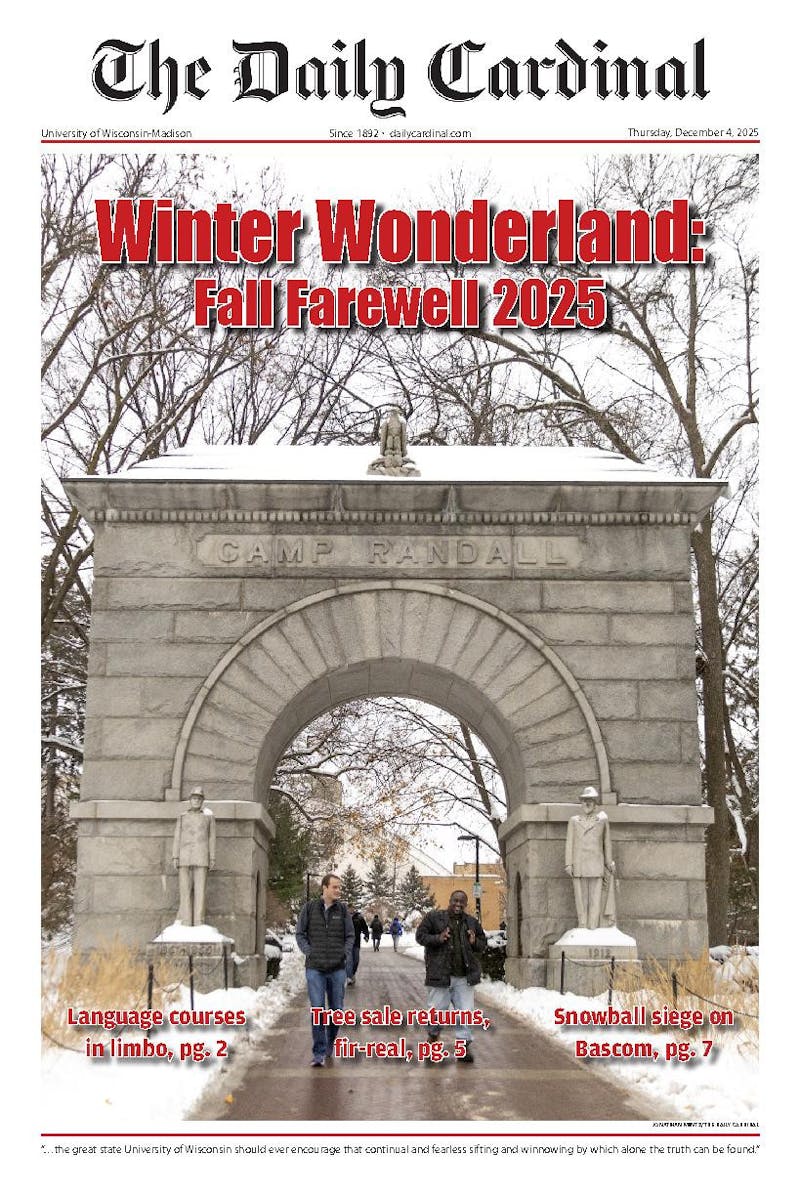It's four in the morning and you're dipping in and out of consciousness. Your cramming schedule has fallen apart'all the new information you try to take in is like cooked spaghetti being thrown at a brick wall: It just doesn't stick.
What's a desperate, drowsy student to do? Caffeine is a quick fix, but only provides a temporary burst of energy and can lead to unwanted side effects like irritability, stomachaches and an inability to concentrate.
According to Claudio Stampi, a leading expert on sleep and the director of the Chronobiology Research Institute in Boston, 'There is no better antidote to sleepiness than'you guessed it'sleep itself.'
More specifically, a power nap could be an effective remedy for your sluggishness.
College students are not the only ones in need of a snooze; bad sleeping patterns are endemic in the United States. According to a recent poll conducted by the National Sleep Foundation, 67 percent of adults get fewer than the recommended eight hours of sleep each night. This is cause for concern'sleep deprivation is dangerous business.
After one night of sleeplessness, a person will be irritable and will either tire easily or be completely wired because of adrenaline. After two nights without sleep, concentration becomes very difficult. At three days, you may lose your already-tenuous hold on reality and begin to hallucinate. Beyond that, as shown in studies conducted on rats, prolonged sleeplessness becomes fatal.
'It is not a coincidence that the most notorious industrial accidents of our times'Three Mile Island, Bhopal, Chernobyl, the Exxon-Valdez'all occurred in the middle of the night or early morning,' Stampi said, 'when operators with major responsibilities were dangerously fatigued.'
Most everybody, then, really ought to take a nap once in a while.
In a recent study conducted by Sara C. Mednick of Harvard University, college students were asked to discern subtle changes in an image at four different times during the day. Of the 30 volunteers tested, 10 didn't nap and their test scores dropped during the two final test sessions. The napping groups, on the other hand, did not suffer from the same performance dip, sometimes achieving even better results with each subsequent session.
Famous nappers are peppered throughout history'Albert Einstein, Winston Churchill, Napoleon, Thomas Edison and Leonardo da Vinci are just a few of the productive figures who knew the value of a nap.
Thankfully, in today's 24-hour global economy, the nap has shaken off its lethargic stigma and is seeing a trendy resurgence. One company, Metronaps, is extolling the virtues of the power nap to big-city dwellers, opening up its doors in New York and Vancouver. High-powered investment bankers, athletes and Broadway actors frequent their napping 'pods' to recharge.
But to be a proficient napper, one must know how to effectively nap'you can't just lie down willy-nilly for any amount of time and expect to always wake up fully restored.
According to the Sleep Disorder Center in Texas, a normal sleep cycle'approximately 90-minutes long'breaks down into five stages.
During the brief first stage, light sleep sets in, muscle activity slows down and occasional twitching occurs. During stage two, which makes up approximately half of the total cycle, breathing and heart rate slow down, coupled with a slight decrease in body temperature (this is why a comforter is so comforting). Recuperative effects of this stage include increased stamina, alertness and, according to a Men's Journal article by Christopher Ketcham, stronger connections in the muscle memory.
'When you wake up, your neurons perform the same function as before, but now faster and with more accuracy,' Mednick said in Ketcham's piece. In the same article, Lance Armstrong's coach Chris Carmichael said naps played a crucial role in the cyclist's training plan.
At stages three and four, 'slow-wave' sleep (or SWS) begins, muscle activity becomes very limited and rhythmic breathing kicks in. Stage five consists of rapid-eye movement, or REM, sleep, when the heart rate goes up and brain activity increases'a result of the dreams that appear during this stage.
Contrary to popular belief, it is SWS that is the most restorative part of the cycle'not the REM stage. Ironically, SWS must be avoided to have an effective power nap.
When roused from SWS, mental processes proceed sluggishly and one's arms and legs may feel like concrete for anywhere between a minute to four hours'this phenomenon is known as 'sleep inertia' and can leave you more drowsy than you were to begin with.
The ideal power nap should only last 20 minutes, which allows the sleeper to narrowly dodge SWS sleep.
However, if you absolutely need more sleep, exploit its cyclic nature'you'll be more likely to avoid waking up from SWS if you set your alarm at 50 minutes, which, according to Ketcham, will 'safely keep you on the power side of your nap.'
So, if you're groggy, practice safe sleep and nap it up.





